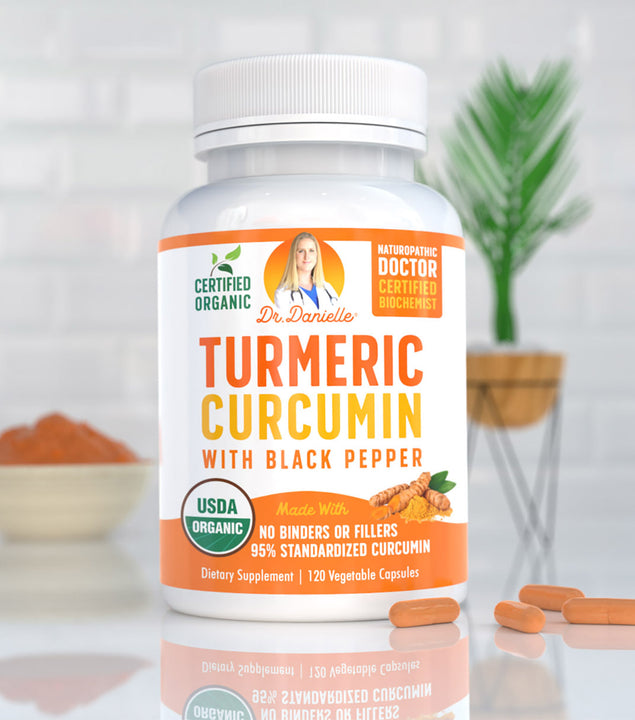Whether you’re looking to lower your risk of chronic health conditions, bolster your emotional well-being, or join the fight against climate change, switching from a meat-focused diet to a plant-based one can seem like a no-brainer (1, 2, 3). But when it comes to (actually) implementing it in your life? Not so much. For one: what’s a plant-based diet’s “tolerance” for animal-derived foods, like milk and eggs? And for another, how can you sidestep health-essential micronutrient shortfalls (e.g., zinc and B12) commonly seen in plant-based diets? Things can get confusing, overwhelming, and difficult fast.
But don't throw in the towel just yet because help's here. This article provides actionable tips to help you smoothly, safely, and sustainably transition toward a plant-based diet.
Plant-based vs. vegetarian vs. vegan diet: what’s the difference?
Vegetarian, vegan, plant-based—do they all mean the same thing? The short answer is no (4):
- Vegetarian diet: A diet free of meat, poultry, and fish. That said, it’s important to note that there are many types of vegetarianism. For example, unlike ovo-vegetarians who steer clear of dairy foods—like milk, butter, and cheese—lacto-ovo-vegetarians allow them in their diets.
- Vegan diet: In addition to simply abstaining from meat, poultry, and fish, vegans also refrain from eating all animal products and by-products. That means no dairy, eggs, or even bee products (e.g., honey, bee pollen, and royal jelly).
- Plant-based diet: One of the most popular definitions of a plant-based diet comes from this 2013 article, “Nutritional Update for Physicians: Plant-Based Diets”, published in The Permanente Journal (5). The authors defined it as a regimen that encourages whole, plant-based foods and discourages meats, dairy products, and eggs—plus all refined and processed foods.
So, in some sense, a plant-based diet grants you the most "flexibility" and freedom in integrating animal-based foods into your meals. But, of course, that doesn't mean you should stick to your current dietary habits. To experience its health benefits, you'll still have to take steps to limit your intake of animal-derived foods while ramping up plant-based ones. Here’s how to get started.
#1: Make gradual changes
If you're used to stay-in steak nights, lazy Sundays roasted meatballs, and starting your days off with fluffy, eggy pancakes, cutting yourself off from these delights—all at once—probably isn’t the best idea. That’s because research shows you’re more likely to succeed at making behavior changes (like adopting a new dietary pattern) when you do so gradually (5, 6, 7). In small, sustainable steps. How? Well, you could start with meatless Mondays, for example, then progressively broaden your practice of a plant-based diet to other days in the week. And if going an entire day without animal-based foods still seems like too much of a stretch right now, why not go meatless during lunch? Go at your own pace.
Beyond improving your success rates, going slow could also spare you from agonizing gastrointestinal symptoms (e.g., bloating, gas, flatulence, and diarrhea) that may arise from a sudden, large increase in fiber intake (8, 9). Um, too late? Already went too fast, too furious in increasing your fiber intake, and are suffering the consequences? Dr. Danielle’s Gut Assist Digestive Enzymes could provide quick relief by enhancing your body’s ability to break down all that grains, legumes, and cruciferous vegetables (10, 11).
#2: Be thoughtful about your choice of plant-based proteins
Protein can come from animals, and it can come from plant-based foods. Ultimately, though, protein is protein … right? Answer: not really. See, there are two "types" of protein: 1) complete protein and 2) incomplete protein (12, 13, 14). Contrary to the former, incomplete proteins do not contain all nine essential amino acids your body cannot produce on its own. And unfortunately, while animal proteins are complete proteins, most plant-based proteins are not (15, 16, 17, 18). Most plants tend to contain low amounts of at least one or two essential amino acids depending on the category to which they belong. So, does that mean you'll inevitably run into malnutrition on a plant-based diet?
Thankfully, no—but you’ll have to be thoughtful about your plant-based protein sources. More specifically:
- Eat complete plant-based proteins: Yes, as rare as they may be, complete plant-based proteins do still exist. Examples include quinoa, buckwheat, soy, mycoprotein, rice, beans, seitan, and spirulina (19).
- Add a variety of plant-based proteins to your diet: Here’s the truth. You don’t necessarily have to eat complete plant-based proteins during every meal. Since different plant categories vary in their amino acid profiles (e.g., legumes tend to be low in methionine, while grains tend to be low in lysine), health experts agree that eating a wide assortment of plant-based protein sources could help you get all the essential amino acids you need (20).
#3: Make sure you get enough of these nutrients
Your protein sources aren’t the only thing you need to keep an eye on. As it turns out, many plant-based diets don’t contain adequate levels of certain nutrients—like vitamins B12 and D, plus docosahexaenoic acid (DHA)—crucial for optimal health (21). Understand how that may affect you and, more importantly, the steps you could take to get everything your body needs below.
Vitamin B12
Vitamin B12 is involved in developing red blood cells, plus maintaining nerves and normal brain function (22, 23, 24). Vitamin B12 deficiency can cause symptoms like weakness, fatigue, impaired brain function, and megaloblastic anemia. Unfortunately, vitamin B12 is almost exclusively found in animal-sourced foods, like fish, meat, dairy products, and eggs—which means you should consider taking a B12 supplement (like Dr. Danielle’s USDA Organic Vitamin B12 Methyl Liquid Spray) to meet your needs.
Vitamin D
Vitamin D helps the body absorb and retain calcium and phosphorus, which are critical for bone health (25, 26, 27). Vitamin D deficiency is linked to an increased risk of various adverse health conditions, including osteoporosis, heart disease, and multiple sclerosis. There are two types of dietary vitamin D: ergocalciferol (D2), typically found in plants, and cholecalciferol (D3), typically found in animal-based foods. But does vitamin D type matter? Well, yes … because D3 increases vitamin D blood levels much more efficiently than D2 (28). Meaning? Individuals following a plant-based diet are at a higher risk of deficiency. So, how do you remedy that? With Dr. Danielle’s Vitamin D3 + B12 Gummies (don’t worry—the vitamin D3 comes from vegan lichen), of course!
Docosahexaenoic acid (DHA)
DHA is an essential omega-3 fatty acid that's important for normal brain development and function. Omega-3 deficiency may translate to symptoms like skin irritation, dry eyes, fatigue, and poor memory (29, 30, 31). While the body can make DHA from the omega-3 fatty acid ALA (found in flaxseeds, chia seeds, and walnuts), the conversion process is inefficient (32, 33). So, to lower your risk of DHA deficiency, algal oil supplements may be worth considering (34).
#4: Know that not all vegan foods are necessarily “healthier”
One important thing to remember as you transition to a plant-based diet is this: just because a food is plant-based doesn't mean it's good for you. For instance, most plant-based meats available on the market are laden with sodium and calories—which means they’re hardly any healthier than the meat they imitate (35). Also, consider sweetened beverages, desserts, and fruit juices. While these are all typically "plant-based", they're usually bursting at the seams with refined sugar and trans-fat.
So, don’t just fixate on whether a particular food is plant-based. Care about its nutrient density, too (36, 37). Nutrient-dense foods are rich in vitamins, minerals, and other nutrients (including free-radical-fighting antioxidants, like Alpha-Lipoic Acid) important for health, without too much saturated fat, added sugars, and sodium. Bottom line? Build your diet around minimally processed, whole foods, like whole grains, fruits, vegetables, legumes, nuts, and healthy oils.
#5: Prepare for potentially awkward situations
To say that food only serves as fuel for the body would belittle its influential role in our social lives and cultural identity (38, 39). Sometimes, as much as you wish to transition to a plant-based diet fully, circumstances in your life may complicate the process. For example, maybe you don't want to disappoint your grandmother by refusing the traditional meat dish she makes for Saturday family gatherings. Or, perhaps, you’re afraid of offending your meat-obsessed boss by suggesting you eat at a vegan restaurant for your monthly performance review. How should you navigate these tricky situations?
You could do a few things, but it's always important to remember that there are no hard-and-fast rules to eating a plant-based diet. And, as mentioned earlier, you don't have to abstain from animal-based foods. You can’t “fail” at eating a plant-based diet. With that in mind, here are two ways you could gracefully handle potentially sticky situations:
- Eat the meat (but only if it feels right to you)
- Explain your dietary choices to those around you and ask for their support
Be patient and trust the journey
Transitioning to a plant-based diet can seem daunting, as with making any behavior change. But, as outlined in this article, you don't have to approach it with an "all-or-nothing" mentality. You could start slow. Ramp it up gradually. And with enough patience and persistence, you'll be well on your way to reaping all the covetable benefits of plant-based diets for your health and well-being.








